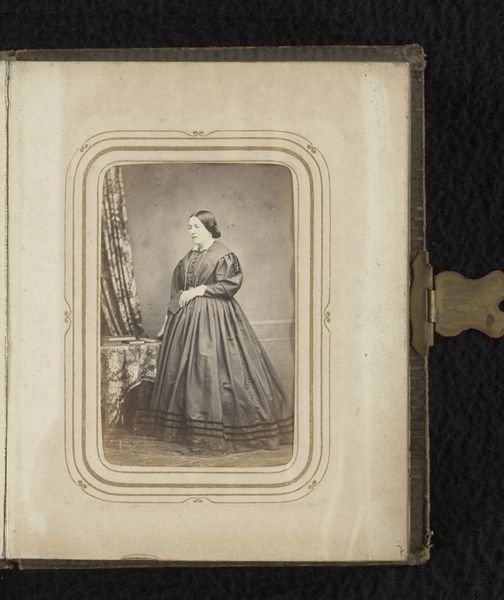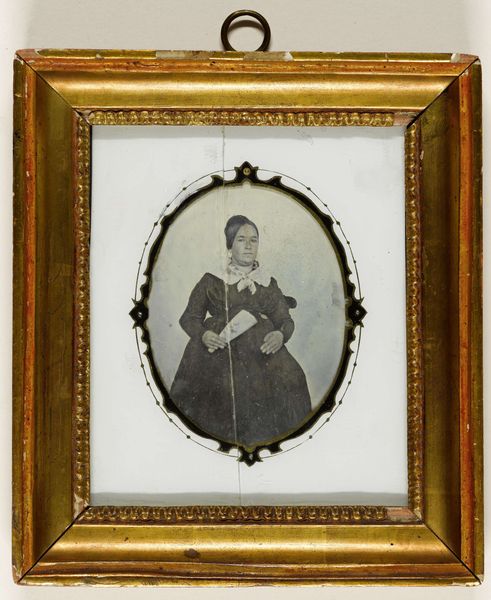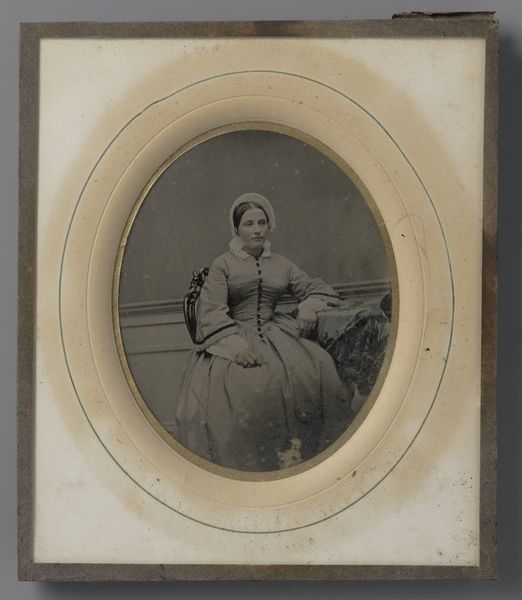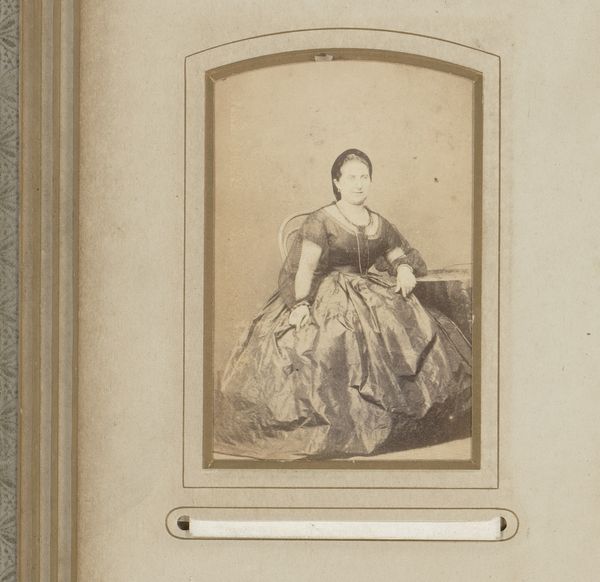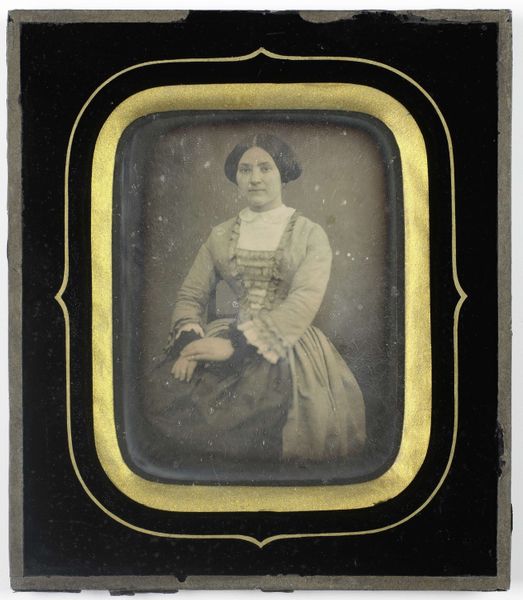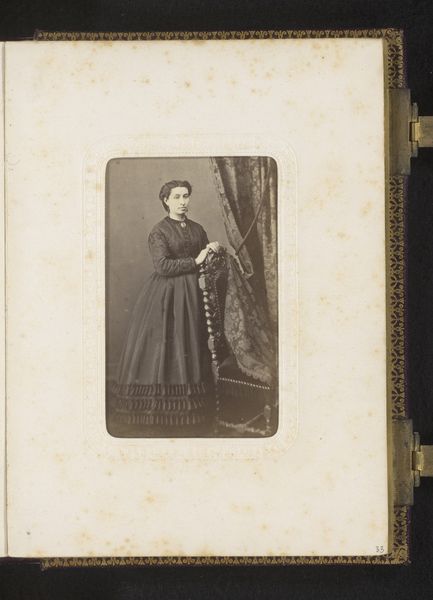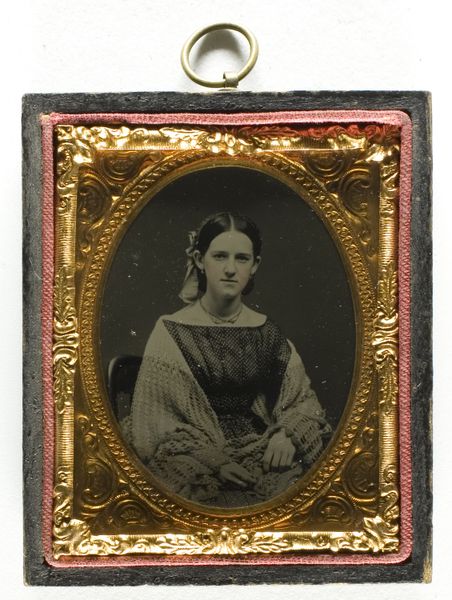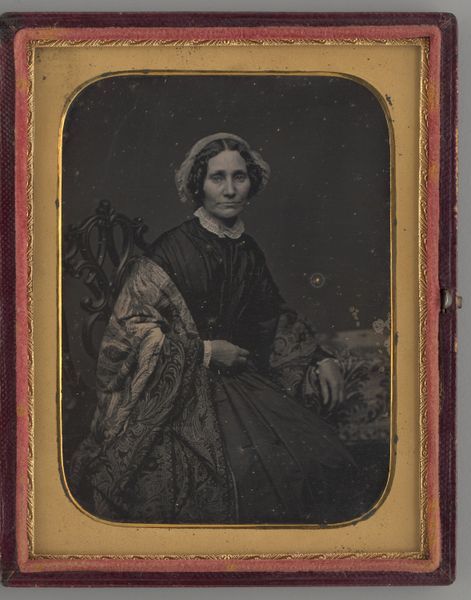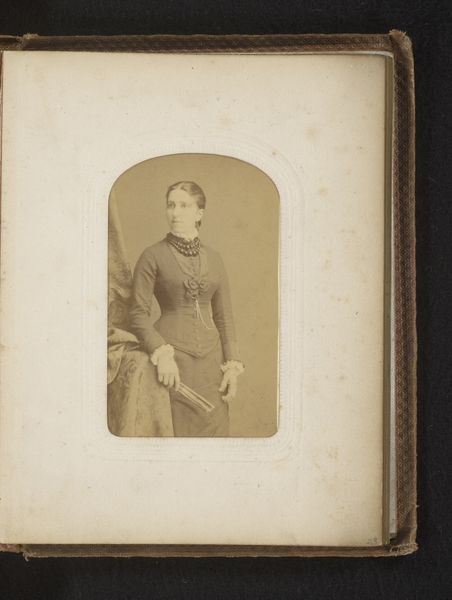
daguerreotype, photography
#
portrait
#
daguerreotype
#
photography
#
genre-painting
Dimensions: height 80 mm, width 67 mm, height 127 mm, width 114 mm
Copyright: Rijks Museum: Open Domain
Curator: Before us, we have an intriguing piece titled "Portret van een onbekende zittende vrouw," a daguerreotype dating back to circa 1855-1870 by an unknown artist, labeled only as "W. Bath." What are your initial impressions? Editor: The immediate feeling is one of constraint, even discomfort. The tight bodice, the enclosed setting, and the woman's reserved expression contribute to this impression. There is something almost melancholic in her posture, or it is, at least, what the formal posing wants you to believe. Curator: Precisely. The composition itself—notice the rigorous symmetry—reflects the social conventions of the era, dictating posture and presentation. The arch within a frame further compartmentalizes her existence and brings order, while her hand resting upon what seems a blue embroidered cloth could act as counterpoint to the stark background. Editor: That embroidery intrigues me. What labor went into producing this image? The posing for the photograph itself, with its precise constraints in duration of exposure, plus the production of such garments as the dress, as the table cloth. So many layers of work that shaped this person. It speaks of privilege and social expectation inextricably intertwined. Curator: An insightful observation. Furthermore, look at the stark contrast achieved with this medium. Light defines form and creates dramatic shadows, while simultaneously exposing the intricate patterns in the fabrics—each detail rendered with meticulous precision. This contrast, in the end, flattens any illusion, exposing it for its very self, a medium, photography, at the advent of its exploration. Editor: That flattened quality is crucial to recognize. As an artwork, it almost challenges the notions of craft—blurring the line between industry, technological advancements and handmade creation, while perpetuating class division via access to technologies. How easily could her peers get one done? That makes this image also act as some type of subtle social statement, doesn't it? Curator: Absolutely, the very act of portraiture became increasingly accessible yet never totally attainable to all, signaling subtle power dynamics. And by studying these structures and relationships embedded within the form and its making we gain greater insights into this artwork’s complexity and our everchanging interpretations of them. Editor: A fascinating intersection of aesthetic formality and socioeconomic narrative, where materials and craft intertwine and challenge conventional categories, and highlight an important issue of past inequalities in technological achievements.
Comments
No comments
Be the first to comment and join the conversation on the ultimate creative platform.

